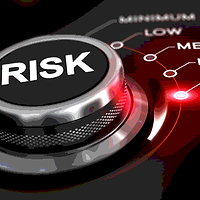Each food manufacturing operation is required to prepare a Hazard Analysis and Critical Control Points (HACCP) or a Hazard Analysis and Risk-Based Preventive Controls (HARPC) plan to identify hazards that can occur in their manufacturing process, as well as plans to eliminate or minimize the hazard. The first part of the plan is the Hazard Analysis; this is where the plant will identify the potential microbiological (e.g., Salmonella, Listeria monocytogenes, Escherichia coli O157:H7, etc.), physical (e.g., glass, stone, metal), and chemical (e.g., allergen, radiological) hazards that may be associated with the ingredients or the process. From audits and observations made of HACCP or HARPC plans, one portion of the Hazard Analysis that is at times not included are radionuclides as part of the chemical hazard analysis. Radionuclides are found naturally occurring in the environment, in rocks and minerals, an example of which is uranium, which can impact ground water that may be used for irrigation. They can also be found as the result of nuclear reactor accidents like the ones that occurred at Chernobyl in northern Ukraine, in 1986 or in Fukushima, Japan, in 2011. These hazards must be considered, but to arrive at the understanding of how this impacts the ingredients in a food product, a risk assessment must also be conducted.
The Hazard Analysis is most often conducted by the food safety and quality assurance team, and they are often expected to have knowledge of risk assessments as well. When conducting an ingredient risk assessment, you may ask several questions to gain information that will help with decision making for the ingredient. Those questions include, but are not limited to:
• What is the history of the location where the ingredient originates and are there either naturally occurring or manmade hazards associated with the location? Examples of this would include ingredients in the region of Ukraine or Eastern Europe impacted by the Chernobyl reactor incident and near the Fukushima Prefecture impacted by the reactor accident.
• What is the history of the ingredient? An example of this is seafood that may come from an area of the ocean with a history of mercury pollution.
• What is the ease of intentional adulteration? In 2014–2015, there was a large recall of cumin that was determined to be contaminated by peanut. This is an example of economic adulteration that also created a food safety hazard.
• What is the history of the supplier? This may require an internet search or use of web-based tools to find out if a supplier, an ingredient, or a geographic location present risks to the ingredients that are provided.
There are several web-based services that can be utilized to research ingredients or suppliers. Two of them are Horizon Scan and Rapid Alert System for Food and Feed (RASFF). These require subscriptions but can aid in researching ingredients with risks, increasing issues, or food fraud. Another option is to utilize Google alerts (www.google.com/alerts) where you can set alerts using specific words and phrases about which you want to receive information. For example, an alert can be set for “Food Fraud” to receive alerts for food manipulation.
Risk assessments can also be used for decision making regarding whether an ingredient should be purchased or used where there is no specific hazard identified but there may be anecdotal association with potential hazards. Using the example of ingredients that may come from certain parts of Ukraine, Eastern Europe, or Japan, a company may want to take a holistic approach to determine whether the risk should be taken. Factors to be considered are whether use of the material could expose consumers to a food safety risk which could then cause regulatory control action, recall, or possible legal liability. The company may also want to include a determination if not using the ingredient could cause disruption of business, reduction in service levels, and customer dissatisfaction. For these decisions, it is best for the food safety team to collaborate with personnel from multiple disciplines: R&D or purchasing to find alternate ingredients or sources, sales and finance to determine possible economic impact of lost sales, and operations to identify potential for reduced production in the plants. There are external resources that may require consultation such as the company insurer, a third-party lab, or an attorney. Of course, the executive leadership will be included as they may make the final decision of whether to accept the risk or avoid the risk, with the understanding they may be ultimately responsible for the outcome.
The food safety and quality assurance team will likely be tasked to be the subject matter experts for risk assessment. For this reason, it is very important for food safety and quality assurance personnel to have training in risk assessment tools and the resources to assist in the process.
Michael Cramer, CQA, is the senior director, food safety & quality assurance, at Ajinomoto Foods North America.




